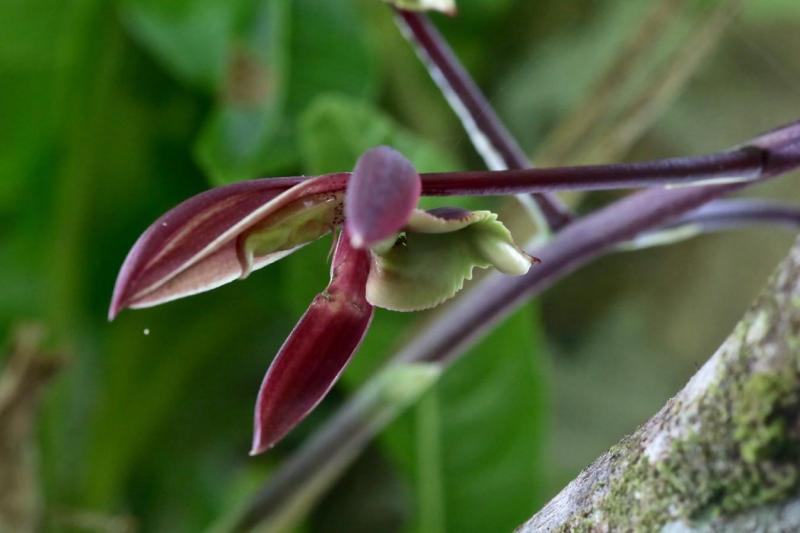Catasetum napoense
Also known as: The Napo Catasetum in the subfamily: Epidendroideae
Native to: Ecuador Peru
General Information
The Napo Catasetum is a sympodial warm to hot growing epiphytic orchid belonging to the sub family Epidendroideae native to Ecuador and Peru. It is named after a Province of Ecuador.
Plant Description
Sympodial. Grows to 36cm. Each new growth has numerous lance shaped leaves that grow to 4-30cm long. Pseudobulbs grow to 2.5-6cm
Flowers
Numerous fragrant blossoms appear during Summer
Fragrance
The orchid is fragrant.
Blooming Season
- Summer
Substrate(s)
- Coarse
- Bark
- Charcoal
- Treefern
- Spaghnum Moss
- Perlite
Care Notes
These orchids like to be watered regulary, especially during warm weather, and prefer a well draining mix or also do well mounted, provided they can be watered daily or even many times a day.
These are quite a forgiving orchid, there are no special requirements to get this orchid to flower, just good care and consistent conditions. Larger plants may be more fussy and can react poorly to change; a poorly timed repotting, a pest infection or an unusually hot day can set them back for a couple of years. However, even plants that have been treated poorly can thrive, and if they are set back they often recover much stronger then they would otherwise be.
Fragrant:- IsFragrant
Climate
These orchids thrive in humid, cool, shady conditions with good airflow, they will be found under dense forest canopies where they will receive moderate sun exposure throughout the year.
When cultivated they will thrive in a cool, sheltered environment such as a shaded greenhouse, or if grown in cooler climates they can be grown in the garden in areas where they are protected from frost and receive shade throughout the year, though they may be able to tolerate some morning sun during winter.
Grows at low elevations. Rainfall ranges from 114mm to 632mm per day, heaviest in May and lightest in December. Humidity ranges from 76% to 81%, highest in July and lowest in February. Temperature ranges from 18C to 32C, highest in February (20C to 32C) and lowest in January (18C to 31C).Watering
These orchids prefer a constant supply of moisture, with a slight drying out between waterings. Saucers can be placed under pots to retain moisture during hot weather, however the saucers should be removed or let to dry every 1-2 weeks to prevent rot. Keep an eye on the plant especially in hot weather and look for cues of under/overwatering and adjust accordingly.
During Summer, be sure to keep media moist. Keep moisture levels up during hot weather as the plant is prone to dehydrationFertiliser
These plants thrive on fertiliser, especially during periods of growth. Liquid fertiliser can be applied year round at the recommended strength, augmented with manure pellets or other quickly degradable fertiliser, applied away from the base of the plant, during periods of strong growth. Slow release pellets can also be applied year round at the rate of 2-3 pellets per cup (250ml) of media.
They can benefit from a high phosphate fertiliser leading up to flowering season, and by a high nitrogen fertiliser when new growth appears.
Use balanced fertiliser year round. This plant is a heavy feeder year round, full strength fertiliser can be used. Fertiliser can be applied heavily year round. Use a high Nitrogen fertiliser during Spring and Summer. Use a high Phosphorous fertiliser during Summer.Potting
These plants are quite forgiving and will do well repotted ever 2-3 years. The mix should be coarse, well draining, and allow space for air to move and for roots to grow.
Alternatively, these plants will also do well mounted to tree fern or cork slabs, or mounted to trees.
Best time for repotting or mounting the orchids is the end of winter when new growths start to appear. Avoid repotting during hot weather,
Use water retentive media such as moss to prevent roots from drying out quickly This plant does very well in baskets or suspended pots Repotting is best done annually.




